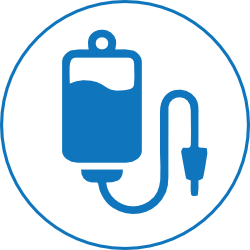IV Insertion Skills - Hands-on IV and catheter training
How well do you understand the mechanism and skills of insertion of intravebous infusion? Do you struggle with IV insertion? Learn how to choose the right gauges, IV site, blood draws, med ports and more.
Intravenous cannulation is a process by which a small plastic tube (a cannula) is inserted into a peripheral vein. The subsequent venous access can be used for the administration of fluids, medication and nutrition.

Learning Objective
How well do you understand the mechanism and skills of insertion of intravenous infusion? Do you struggle with IV insertion? Learn how to choose the right gauges, IV site, blood draws, med ports and more.
Flexible Scheduling
Choose from weekday, weekend or evening classes to fit your busy professional schedule. Scheduling is easy and fast

Introduction
Intravenous (IV) cannulation, or IV insertion, involves inserting a thin, flexible tube (cannula) into a vein to allow for the administration of fluids, medications, and other substances directly into the bloodstream. This provides access for various purposes, including blood sampling, medication delivery, and hydration.
Steps Involved in IV Insertion:
1. Site Selection:
A suitable vein is identified, typically in the arm or hand, where the cannula will be placed. Factors like vein size, location, and condition are considered.
2. Preparation:
The skin at the insertion site is cleaned with an antiseptic to minimize the risk of infection.
3. Insertion:
The cannula is carefully inserted into the vein, usually at a shallow angle, and the needle is then withdrawn, leaving the catheter in place.
4. Confirmation:
Blood return in the cannula’s hub confirms successful placement within the vein.
5. Securement:
The cannula is secured with tape and a dressing to prevent movement and infection.
6. Fluid Administration:
The cannula is connected to a bag of fluid or medication, and the flow is regulated according to the patient’s needs.
7. Post-Insertion Care:
The insertion site is monitored for signs of complications, such as swelling, redness, or pain.
8. Documentation:
Details of the IV insertion, including the site, catheter type, and any complications, are recorded in the patient’s chart.
Types of IV Cannulas:
-
Over-the-needle IV catheters:These have a needle on the outside, which is used to puncture the vein, and then the catheter is pushed in after the needle is withdrawn.
-
Butterfly catheters:These have a winged needle that is inserted at a shallow angle into the vein.
-
Central venous catheters:These are inserted into larger veins, often in the chest or arm, for long-term IV access or when peripheral veins are not suitable.
Importance of Proper Technique:
- Infection Prevention: Strict adherence to aseptic techniques is crucial to prevent infection.
- Complications: Proper insertion techniques minimize the risk of complications like infiltration, phlebitis, and thrombosis.
- Patient Comfort: A skilled approach can make the IV insertion process as comfortable as possible for the patient.
